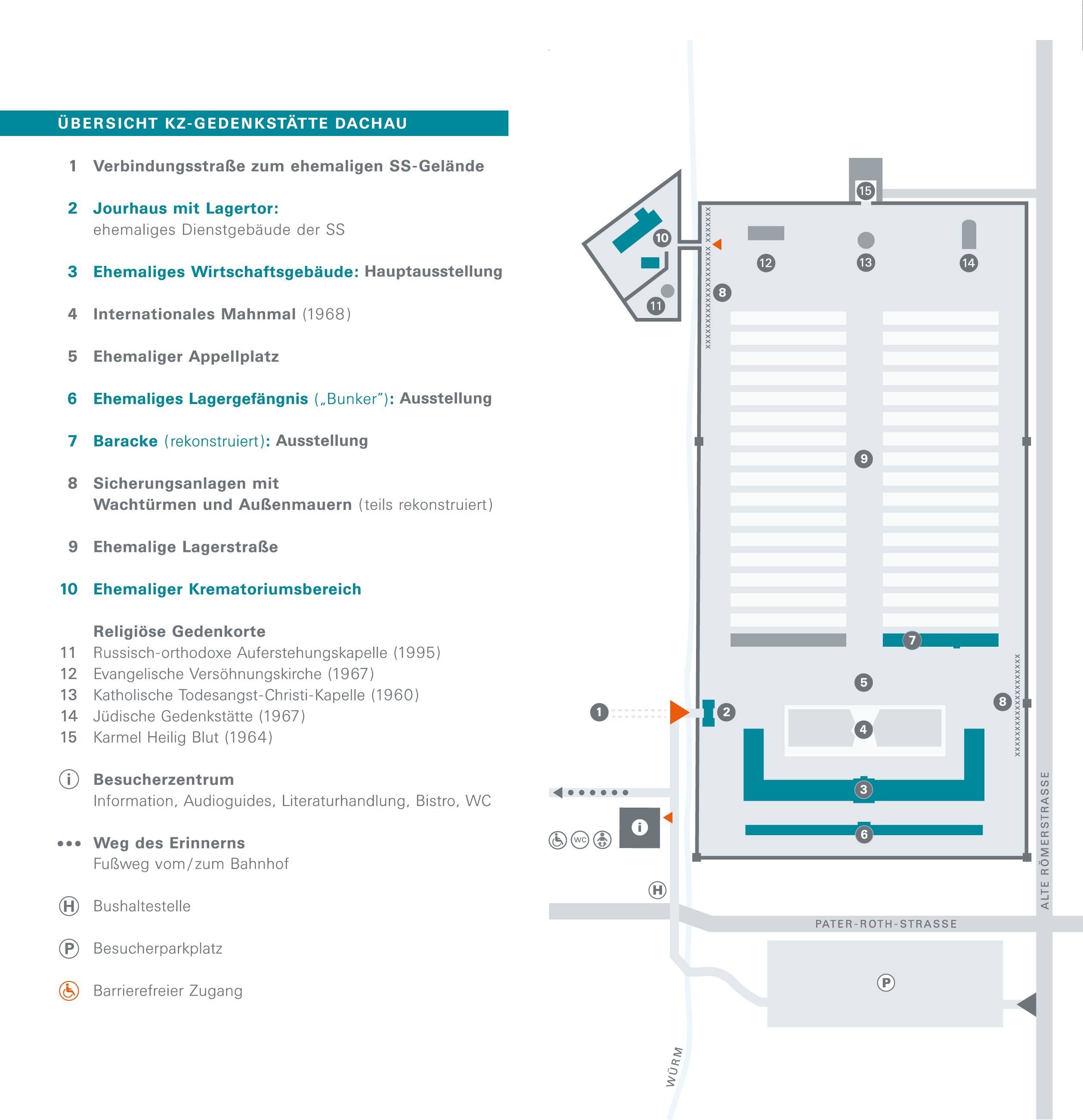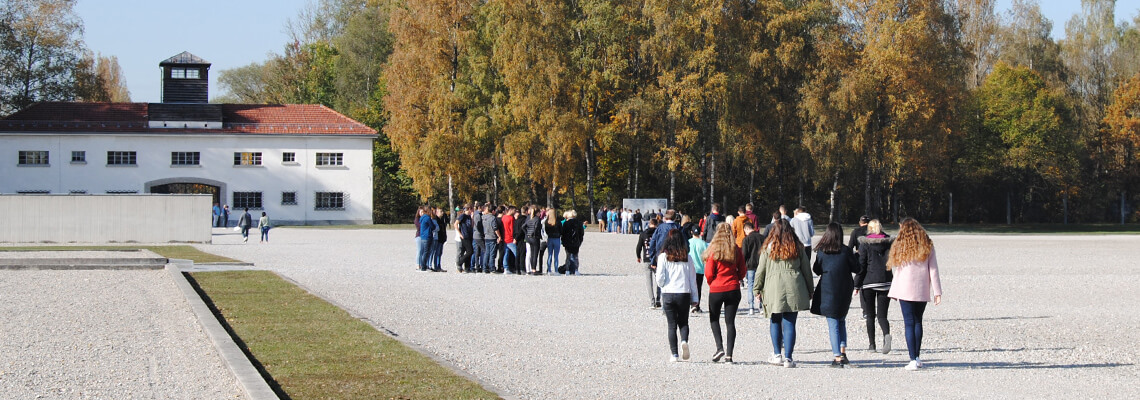Guided Tours for Groups
Please note that guided tours and workshops for groups must be booked at least three months in advance. Individual visitors should buy their tickets for the open tours at the information desk in the visitor centre at least 45 minutes before the tour begins.
Guided Tours for Groups and School Classes
You can book guided tours for groups and school classes by contacting the Education Department of the Dachau Memorial Site. Guided tours take about 2 hours and are available in English, German, French, Spanish, and a number of other languages. Please ask for your preferred language. The tours cost €100 per group (maximum 30 people). Participants should be at least 13 years old.
By investigating the historic site, the remaining buildings, and the various reconstructions, visitors can discover the historical traces from time of the concentration camp and its aftermath. The inclusion of biographies of former prisoners enables a personalized access. It is possible to ask for a specific focus when you book your tour. Our guides work as freelancers and have been specially trained by the Memorial Site.
Please book ahead by using the booking form on our website.
Do not hesitate to contact us if you have any further questions (Monday to Friday 9:00 am to 12:00 pm):
Information for multipliers
The following material on preparing and reviewing a visit to the Dachau Memorial Site with a school class or group is for the multipliers responsible for these groups.
For carrying out a visit with a group, the Dachau Memorial Site recommends the booking of a guided tour; specially trained by the Education Department, the guides can structure the tour to fit your requirements.
Material for preparing a visit
Every visit to the Dachau Memorial Site needs to be prepared, both in subject matter and emotionally. This enables the pupils to understand the special character of the location. It is recommended to explain the concentration camp system and the function the Dachau camp had within this system; also of importance here is the Nazi concept of the “people’s community” and the mechanisms of exclusion and persecution it was based on.
It is recommended to discuss with the pupils their expectations and fears before the visit; also of importance here is to make clear that there is a difference between the former concentration camp and the Memorial Site. A layout map of the Memorial Site is of great assistance.

Material for a follow-up review of a visit
After visiting the Memorial Site it is important that you do not leave your group alone with their impressions. One possibility of reviewing a visit is to simply talk about what has remained in the memory. As part of the half- and full-day seminars, the Education Department has developed the exercise: “What’s Remained?” Although carried out on the Memorial Site, the exercise is also suitable for schools etc. outside the grounds. Photos of today’s Memorial Site is one possible way to get a discussion going: sitting in a circle with the photos laid out in the middle, each participant choses the motif that interests or moves them, and they use the photo to speak about what they’ve learned from their visit.
All image rights remain with the Dachau Concentration Camp Memorial Site. The exercise is based on a method developed by the Max Mannheimer Study Center.
After visiting the Memorial Site it is important that you do not leave your group alone with their impressions. One possibility of reviewing a visit is to simply talk about what has remained in the memory. As part of the half- and full-day seminars, the Education Department has developed the exercise: “What’s Remained?” Although carried out on the Memorial Site, the exercise is also suitable for schools etc. outside the grounds. Photos of today’s Memorial Site is one possible way to get a discussion going: sitting in a circle with the photos laid out in the middle, each participant choses the motif that interests or moves them, and they use the photo to speak about what they’ve learned from their visit.
All image rights remain with the Dachau Concentration Camp Memorial Site. The exercise is based on a method developed by the Max Mannheimer Study Center.
Images of the Dachau Concentration Camp Memorial Site you can use for this exercise:

